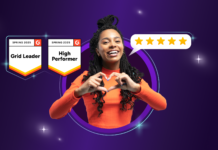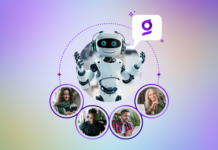Business owners are finding themselves in an interestingly flipped position as the global job market continues to improve. In a recent interview with Forbes, Ana Recio, (head of recruitment atSalesforce), says “The days of begging for a job are gone. It’s a candidate’s market. We send them‘thank you’ notes after interviews now.” And she would know what she’s talking about. The CRM company is hiring 6,000 new employees every year to keep up with their 30% annual growth.
In the U.S. alone, companies spend over $100 billion annually on employee incentive programs. That statistic comes from Black Hawk Engagement Solutions, which also reported that the employee incentive industry has more than doubled in the last decade.
Let’s take a look at how to use incentives and appreciation programs to increase engagement and employee retention.
Traditional Incentive Programs
In years past, typical incentive programs would be event-based or tenure-based, like the gold watch a sales representative would receive upon retirement or a gift certificate for a free ham every Christmas. While these may have been considered nice perks for workers, there is little evidence to show that they helped production or that they diminished attrition.
Implementing traditional incentive programs may not be the way to go as more and more millennials are entering the workplace.
In an interview with USA Today, Lisa Orrell, the founder of The Orrell Group and author of four books on millennials in the workplace, offers this perspective: “For this generation, raised by so-called helicopter parents who told them their opinion matters and life’s too short to be unhappy, the relationship with a boss can have an almost parental dynamic. The whole one-size-fits-all recognition from the corporate world won’t work for them.”
With that in mind, what are other options that companies are using?
Peer-to-Peer Recognition
According to Forbes, “43% of workers cite lack of recognition as their primary source of unhappiness in the workplace.” In the day and age of Facebook likes, Twitter retweets, and other real-time platforms that provide validation, peer-to-peer recognition is becoming an increasingly popular incentive structure.
Today’s employees are seeing greener pastures on the other side of the job-market fence. According to a recent survey conducted by Career Builder, it is estimated that one in five employees are determined to leave their current place of work within the next year. What are successful companies doing to use incentive programs to bolster retention and increase employee engagement?
Zappos, the online retailer based out of Las Vegas, NV, was an early adopter of peer-to-peer recognition and has set the industry standard with their program. Zappos employees can reward each other “Zollars” for volunteering to help one another or answering questions in training. Zollars can be used for movie tickets and Zappos merchandise, or can even be used for charitable donations. Any employee can award Zollars to any colleague. The only requirement is that they fill out a form explaining why they are showing their recognition.
Oracle and Zebra Technologies are two other companies that are realizing how effective peer-to-peer recognition is and are also using it to replace their top-down models of appreciation.
Does it work? Derek Irvine, VP of client strategy and consulting for Globoforce, a leading incentive-solutions company, says after implementing peer-to-peer appreciation programs, Globoforce’s clients “often see a double-digit improvement in employee engagement scores in six to twelve months.”
In a survey conducted by the Society of Human Resource Management, results showed the following:
“When you look at companies that promote peer-to-peer recognition versus those that don’t, they are 11.5% more likely to impact engagement in the workplace; 28% more likely to reinforce corporate values; 34.8% more likely to help with employee retention and 35.7% more likely to have a positive impact on financial results.”
Gamification
Gamification is defined as applying game mechanics and game design techniques to engage and motivate people to achieve their goals. More and more companies are using gamification for employee engagement because it combines three of the strongest employee motivators: recognition, rewards, and competition.
Call center outsourcing firm LiveOps reported that after adding gaming elements to their employee rewards program, “call times were reduced by 15% while sales increased at least 8%. Gamification techniques also reduced training time from four weeks to 14 hours by awarding badges and rankings for motivation.
Stewart Agency, a New York-based insurance company, wanted salespeople to collect email addresses when talking to leads. They decided to incentivize the process. Principal owner Greg Stewart launched a gamification program called “Get That Mail,” which awarded salespeople based on how many email addresses they could collect over a couple of months.
According to Stewart, “I had one employee that went from getting no emails from clients to getting 83 in two days. In less than two months we almost doubled the amount of emails we had collected over the last three years.”
A gamification program can be as simple as keeping score on a whiteboard and rewarding employee accomplishments in-house to more elaborate software-based solutions. Companies like Snowfly make customized objective-specific incentives designed to do everything from absenteeism reduction to retention improvement.
Experiential Programs
Experiential incentive programs focus on rewarding an employee with memories instead of cash or trophies. Ken Abendschein, Awards Manager for Maritz Incentives explains that “many employees increasingly are looking to create memories with their rewards. These luxury gifts are not necessarily wildly extravagant but more in tune with an individual’s lifestyle and personal interests.”
An example is Holiday Inn Club Vacations, IHG’s timeshare brand. Every year, HICV hosts a “Master’s Trip” for it’s top-performing sales and marketing representatives. A new destination is chosen every year, and the trips include airfare, luxury accommodations, and special dinners for two along with up to $2,500 in spending cash. This year’s six-day Master’s Trip whisks the company’s sales and marketing superstars to first-class accommodations at the Ritz-Carlton, Aruba.
John Sutherland, Executive Vice President of Sales & Marketing at HICV says he never gets tired announcing each year’s Master’s Trip. In a glossy magazine about the trip that is handed out to employees Sutherland says “It’s a special opportunity each year not only to set up an incredible adventure, but also to recognize your accomplishments and remind you to keep reaching higher to achieve your personal and professional goals.”
Blueboard Rewards is an incentive company that offers several different experiential solutions for recognition. Their menu includes everything from sky-diving trips to private chauffeured wine tastings.
Blueboard cofounder Kevin Yip explains “Companies [that] have recognition/rewards programs are looking for new ways to incentivize employees. Some of our early prospective customers are companies who are having retention issues and want to use Blueboard as part of a larger shift in company culture.”
How effective can an experiential shift be? Ali Dockery of Eventbrite had the opportunity to experience a Blueboard reward after winning a sales challenge. She received tickets to the World Series for her and her father. According to Ali, “Having this unforgettable experience with my dad was so much better than a cash incentive, which would have disappeared into my bank account or gone to pay rent. Blueboard turned my dream into reality.”
Whether a company decides to implement peer-to-peer recognition, gamification techniques, experiential incentives, or a combination of all three, one thing can be sure: with companies spending three times more on incentive programs than they do on advertising, successful incentivization in today’s employment landscape requires innovation to succeed.





